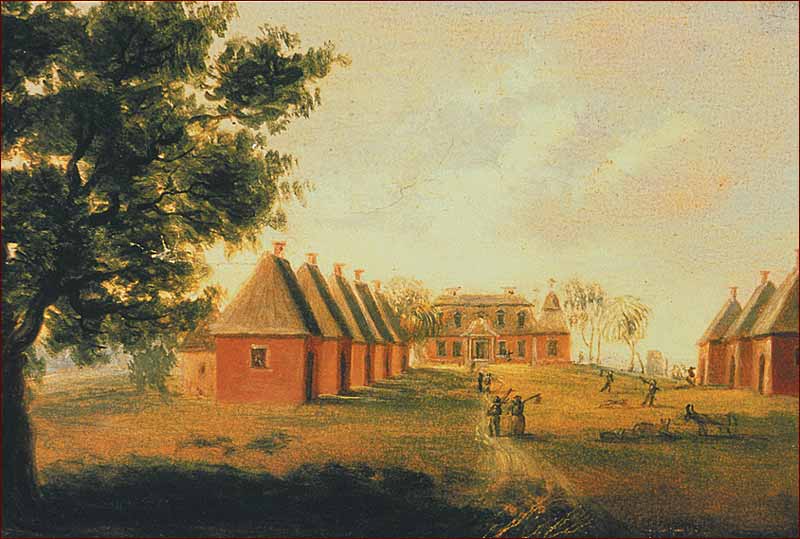

Mulberry Plantation oil painting on paper Above is by the artist Thomas Coram. c. 1779
"Mulberry Plantation Excerpts From The Luke Beckerdite Article Below (beginning at paragraph 30/32)"
The walnut stretcher table illustrated in figure reportedly
belonged to Colonel Thomas Broughton of Mulberry Plantation. Its ogee rail
moldings, baroque, baluster-shaped turnings, and compressed, ball-shaped feet
resemble those of the Manigault table, though the Broughton example may be at
least a decade later. The top of Broughton’s table also has an ogee molding
identical to those on the rails and stretchers below, and it has one-inch-thick,
dovetailed cleats that were originally secured to the frame with three pegs each
. Tables with dovetailed cleats were produced throughout northern Europe from
the Renaissance to the nineteenth century.
Broughton’s “fine seat” is depicted in a late eighteenth-century watercolor by
Charleston artist Thomas Coram (fl. 1769–1780). In the foreground are rows of
slave houses with high, steep roofs, small windows, and arched doors. These
dwellings appear to be somewhat later than Broughton’s house, Mulberry, which
probably dates to 1711–1714. Partially shown in the background, Mulberry is a
one-and-a-half-story, English bond, brick building with a jerkin-head gambrel
roof and four adjoining, single-story pavilions. The house originally had a
gable roof, but it was altered to the present form before Coram’s painting.
Architectural historian Thomas Waterman argued that Mulberry’s design derived
from sixteenth-century French chateaux and pointed out similarities between
Mulberry and vernacular houses in French-settled areas of Virginia and the West
Indies. Other scholars have suggested that late seventeenth-century
Netherlandish and French tower houses may have provided the inspiration for
Mulberry’s distinctive pavilions.
The interior was extensively remodeled during the nineteenth century, but
remnants of original woodwork on the second floor document the involvement of
European-trained joiners. The doors have central panels with molded,
lozenge-shaped designs, or pointes des diamant, and complex applied moldings
around the panel fields —details that occur frequently on late seventeenth- and
eighteenth-century French furniture and architectural woodwork. The presence of
such details should come as no surprise given Berkeley County’s large Huguenot
population and Broughton’s ties to that community. He was, for example,
acquainted with refugee artisans, including joiner Pierre Le Chevalier, and
Broughton’s son, Nathaniel, married Henriette Charlotte de Chastaigner, whose
father, Alexander, was from Rochelais nobility.
Contemporary Huguenot houses provide an interesting contrast with Mulberry.